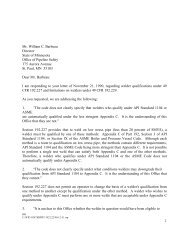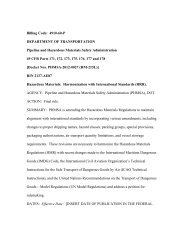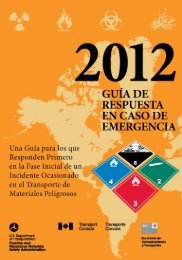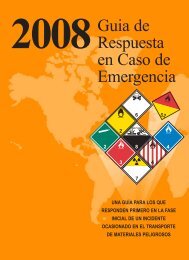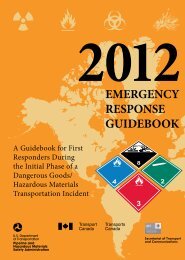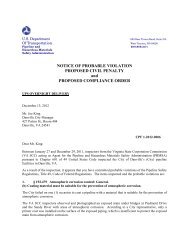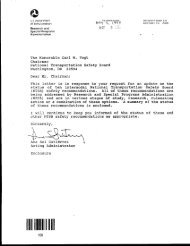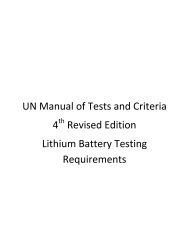Training Guidance7609am.indd - PHMSA - U.S. Department of ...
Training Guidance7609am.indd - PHMSA - U.S. Department of ...
Training Guidance7609am.indd - PHMSA - U.S. Department of ...
Create successful ePaper yourself
Turn your PDF publications into a flip-book with our unique Google optimized e-Paper software.
DETERMINE EMPLOYEE NEEDS<br />
What You Should Know: A Guide to Developing a Hazardous Materials <strong>Training</strong> Program<br />
As previously mentioned, HMR training requirements are performance based to provide fl exibility<br />
regarding training format and delivery. <strong>Training</strong> may be provided directly by the hazmat employer or by<br />
independent training providers. Therefore, hazmat employers have a variety <strong>of</strong> training options available.<br />
The hazmat employer is responsible for selecting training that meets company safety goals and the<br />
HMR requirements. The process may begin with conducting a needs assessment based on a thorough<br />
understanding <strong>of</strong> your company’s operations and its hazmat employees’ responsibilities, knowledge and<br />
capabilities.<br />
You may want to begin with these questions:<br />
•<br />
•<br />
•<br />
•<br />
•<br />
•<br />
•<br />
•<br />
•<br />
•<br />
•<br />
•<br />
•<br />
•<br />
•<br />
What hazardous materials/wastes does your company handle and which hazards do they<br />
represent? For example, do your hazmat employees handle hazardous materials such as<br />
infectious substances and lithium batteries?<br />
What quantities do you ship and how frequently? For example, do you ship bulk, nonbulk,<br />
ORM-D, excepted quantities, or small quantities?<br />
What modes <strong>of</strong> transport do you use?<br />
Are there materials that your employees may not be aware are hazardous materials and<br />
are subsequently being shipped undeclared. Examples include paint, perfume, batteries,<br />
aerosols, and fi reworks.<br />
Where do you transport hazardous materials (i.e. domestic or international locations)?<br />
Do company accident or injury rates indicate additional training is necessary? If so, in<br />
what areas?<br />
What regulations does the training need to cover?<br />
What are the job descriptions/functions <strong>of</strong> your hazmat employees?<br />
Have your hazmat employees been trained previously?<br />
Are your hazmat employees trained in all aspects <strong>of</strong> the function(s) they are performing?<br />
For example, are your employees responsible for shipper certifi cation trained in each<br />
aspect <strong>of</strong> the hazmat shipping they are certifying such as packaging or package closure<br />
requirements?<br />
Have any responsiblities changed?<br />
Has the company’s operations changed?<br />
What languages need to be addressed?<br />
Are your employees aware <strong>of</strong> incident reporting requirements?<br />
Has anything else changed?<br />
7





